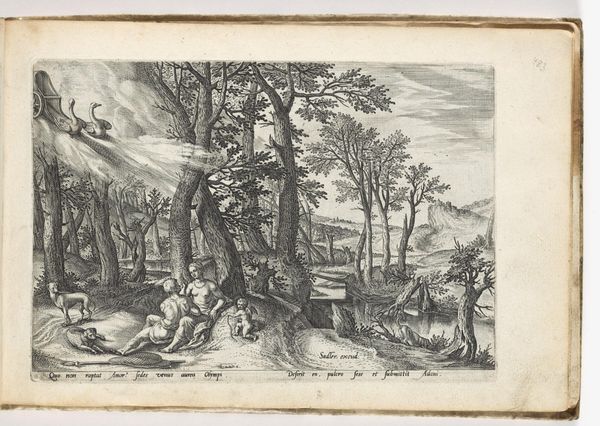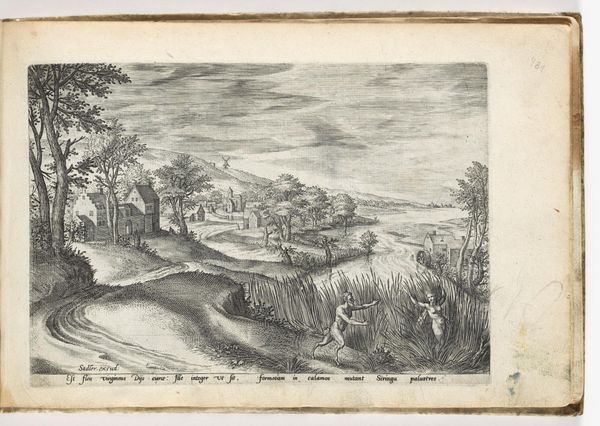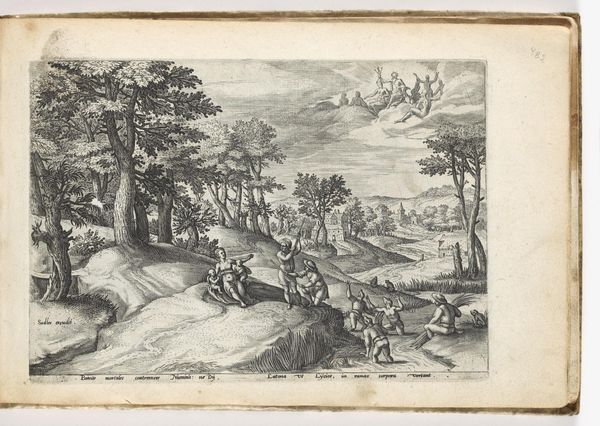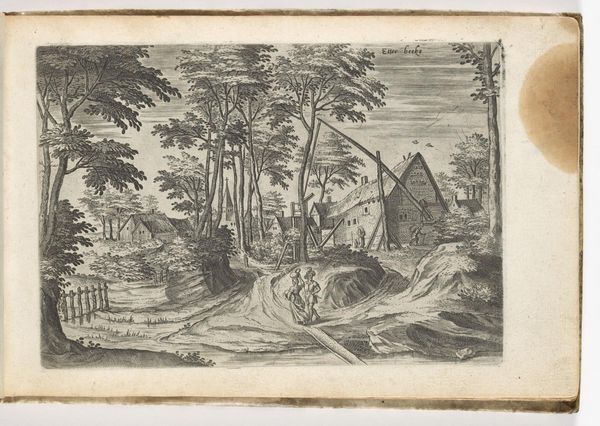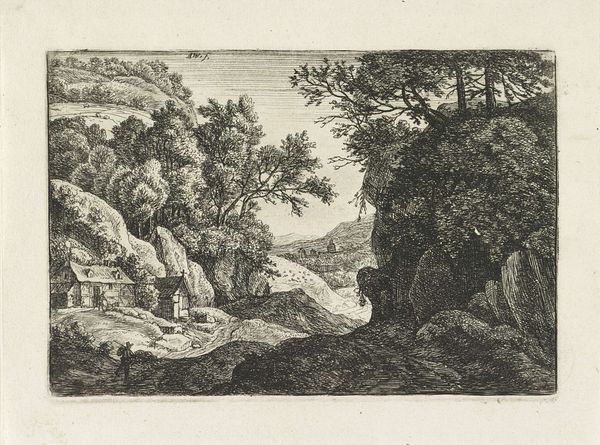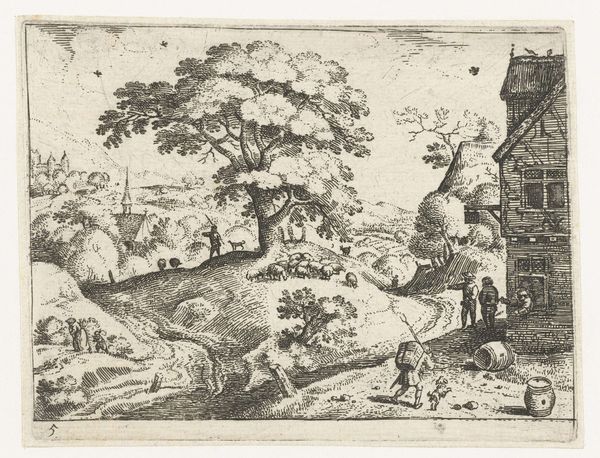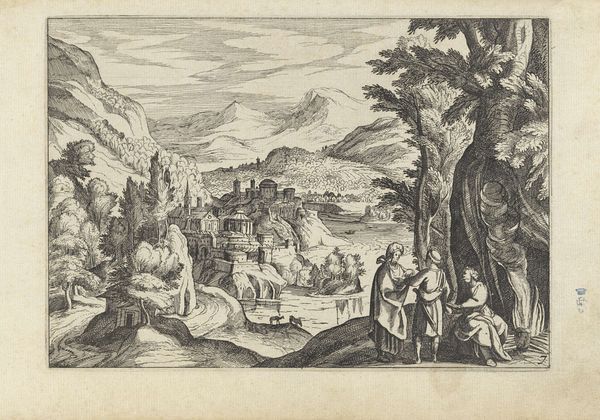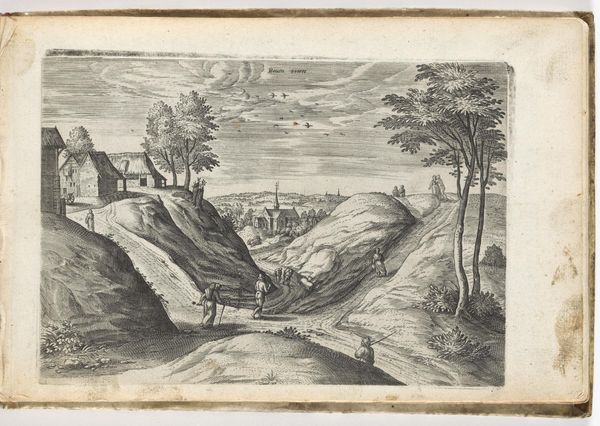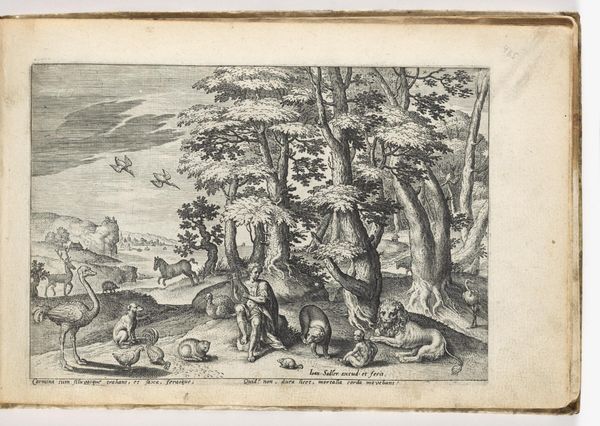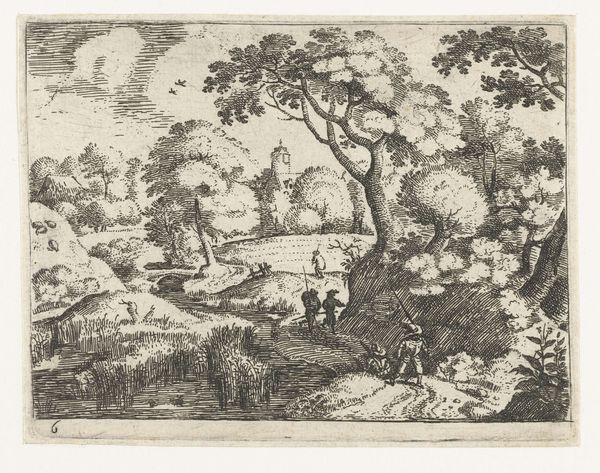
Copyright: CC0 1.0
Editor: This is Johann Sadeler's "Narcissus," created around 1600. The crisp lines and detailed landscape give it such a sharp, almost austere quality. What structural elements stand out to you in this composition? Curator: Note how Sadeler has employed a receding landscape, leading the eye from the dense foreground to the distant, almost ethereal rock formation. Observe also the strategic placement of Narcissus, bisected by the river, visually emphasizing his liminal state between reality and reflection. Editor: I see what you mean about that division. Are there other formal devices at play? Curator: Consider the contrast between the dense, almost chaotic, foliage on the left and the more open, structured terrain on the right. This juxtaposition further reinforces the central theme of duality and self-obsession. Editor: That's fascinating. I hadn't considered how the landscape itself mirrored the psychological narrative. Curator: Precisely. By analyzing these formal elements, we gain a deeper understanding of the artwork's intrinsic meaning. Editor: I will be thinking about that contrast for a long time. Thank you!
Comments
No comments
Be the first to comment and join the conversation on the ultimate creative platform.
